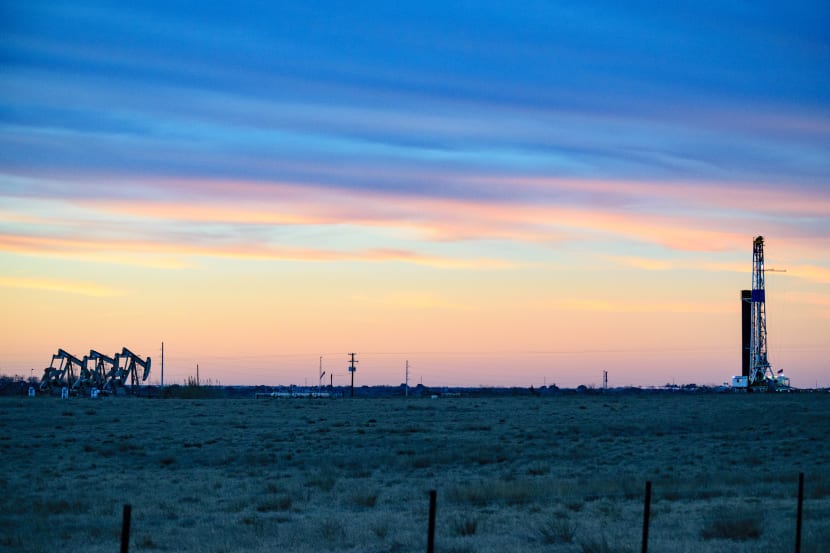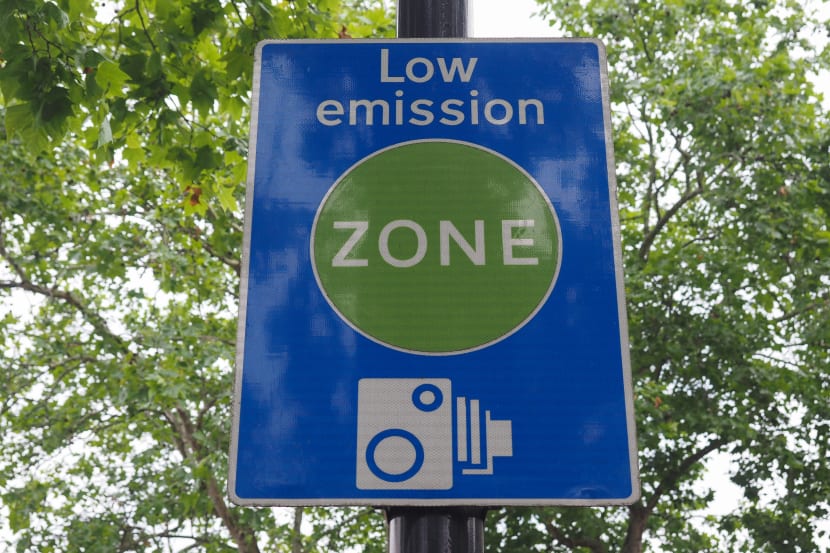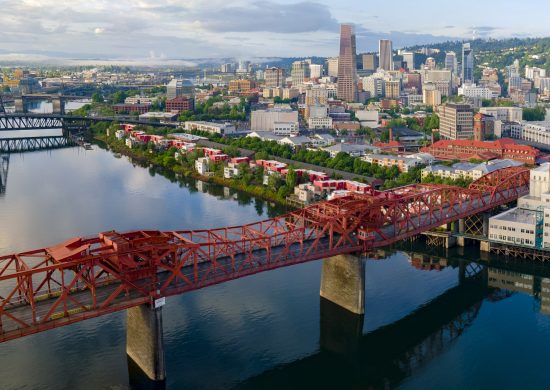
Part Two:
The Pisces Foundation recently invited several of our partners to share insights on the potential of super pollutant mitigation.
This is the second of a three-part series sharing advocates’ ideas and visions for the future of this critical climate mitigation strategy. Part One reflected on how super pollutants emerged as a climate mitigation strategy, the early days and early advocates, and milestones achieved by the movement.
Challenges and opportunities on the road to progress
Super pollutants like methane, HFCs, and black carbon have often been overshadowed by carbon dioxide in public debates and policy discussions. David Doniger highlights the ongoing struggle: “It was—and still is—hard to get super pollutants out of the shadow of carbon dioxide. CO₂ is less potent than HFCs, methane, and other super pollutants, but its overwhelming volume dominates the public debate.”
Sarah Ann Smith sees the shifting political landscape as both a challenge and an opportunity. “The changing political environment in several countries can be seen as a challenge, but I also think it presents a tremendous opportunity for Brazil, China, the European Union, and the United Kingdom to continue stepping up,” she says. The challenge, however, lies in shifting perspectives. “One of the biggest challenges is stepping outside of the climate-first lens that so many of us advocates and funders bring to the table,” Smith explains. Advocates often treat air quality improvements, agricultural productivity, fuel savings, and waste reduction as “co-benefits” to the climate focus, when in reality these should be seen as primary benefits. Re-centering these advantages, she argues, is crucial for making stronger progress.
As environmental regulations are challenged, the stakes for people and the planet have escalated. Taryn Finnessey underscores the risks of rolling back regulations, both for human health and economic competitiveness. One of the challenges we are going to face going forward as these rules are challenged, rolled back, or rescinded, is that the health, safety, and well-being of people and the environment are at risk,” she warns. Additionally, Finnessey points out the economic consequences. Low-HFC products widely available in international markets cannot be sold in the U.S. because they are neither manufactured nor approved domestically, and products made for the U.S. market often cannot be sold elsewhere because they do not meet more rigorous standards.
Several states are embracing advanced monitoring technologies such as drones and satellites to enhance and enforce accountability. However, the adoption of these technological innovations has been slow to spread. “California, Colorado, and Pennsylvania have pioneered this work with remote sensing technologies to demonstrate the usefulness and validity of these new technologies,” according to Kareem Hammoud. “The challenge is one of scale, in part due to limited state staff capacity to track and fully utilize the explosion of innovation in this space.”
“Scaling up from regional to federal awareness has been a tremendous challenge,” says Isella Ramriez, “because those opposed to stronger regulation of harmful emissions have deep lobbying, media, and communications budgets.”
 Rachel Muncrief speaks to the challenges in aviation, particularly around contrail emissions. “Researchers, including experts at the ICCT, continue to work through challenges associated with reducing super pollutants such as weather forecast limitations in the upper atmosphere that complicate flight planning around climate-sensitive airspaces,” Muncrief notes. Additionally, industry resistance has slowed the full implementation of the EU’s aviation Monitoring, Reporting, and Verification (MRV) regulation, which aims to track non-CO₂ emissions from flights. She points out that public understanding of the role of contrails in climate change is also incomplete, “due to modeling complexities,” making it harder to gain widespread support for mitigation strategies.
Rachel Muncrief speaks to the challenges in aviation, particularly around contrail emissions. “Researchers, including experts at the ICCT, continue to work through challenges associated with reducing super pollutants such as weather forecast limitations in the upper atmosphere that complicate flight planning around climate-sensitive airspaces,” Muncrief notes. Additionally, industry resistance has slowed the full implementation of the EU’s aviation Monitoring, Reporting, and Verification (MRV) regulation, which aims to track non-CO₂ emissions from flights. She points out that public understanding of the role of contrails in climate change is also incomplete, “due to modeling complexities,” making it harder to gain widespread support for mitigation strategies.
Although many states have taken action on super pollutants, Taryn Finnessy stresses that “a lot of what the states are doing is because the federal government is failing to do it, and not moving fast enough to protect the health, safety, and well-being of their people and their environments,” she says. States, therefore, have had to step in to fill the gap left by federal inaction, an effort that has been both necessary and challenging.
Durwood Zaelke adds a sense of urgency to the conversation, pointing to the critical need for fast action. “It is a challenging time with the geopolitics we’re facing in the U.S. and other parts of the world. But there are always things that can be done,” Zaelke says. He stresses that the next five years are crucial, with the risk of surpassing the 1.5-degree Celsius global temperature increase. “You have to think of decarbonization as a marathon—it’s a long race,” Zaelke explains, comparing CO₂ reductions to a long-term strategy and super pollutants to a sprint. Cutting super pollutants, he argues, could avoid four times more warming by 2050 than decarbonization alone. “The time is too short before self-amplifying feedback pushes the planet past the irreversible and potentially catastrophic tipping point. So speed becomes our most important metric,” he concludes. “And when you look at the biggest and fastest opportunity, it’s methane.”
As awareness of super pollutants grows among policymakers, funders, and the public, we see funding, regulation, and innovation begin to shift
The 1980s marked a turning point for advances in cooperation and progress, beginning with CFCs. “That shift, from industry’s typical scorched-earth opposition to openness to innovate and compromise, occurred over a long period,” recalls David Doniger. “It was the product of pressure from environmentalists, news media, and forward-looking elected officials. And it was the product of regulatory pressures above and below the federal level. Other countries—especially in the European Union—pressed forward faster. And so did leading U.S. states. The industry needs predictability and some degree of uniformity in order to market products in national and international commerce. So that has led them to support the HFC phase down, for example, at both the international and federal levels. And it has turned sleepy chemical manufacturers and appliance makers from the 1970s and earlier into much more innovative companies.”
Sarah Ann Smith sees this growing awareness as a catalyst for broader engagement across the globe. “As awareness grew around methane, interest expanded from a small circle of early partner organizations and government champions to a much wider and truly global ecosystem,” she explains. The issue of methane gained significant momentum, with numerous countries implementing methane regulations. New business models began to emerge, including those that involved local communities in recycling organic waste, and innovative solutions were developed to reduce agricultural emissions while enhancing farmers’ productivity. Yet, despite this progress, Smith points out that funding remains disproportionate to the scale of the problem. “According to the Climate Policy Initiative, less than 2% of globally-tracked climate finance addresses methane, while these emissions are responsible for nearly half of current net warming,” she says. This gap between the urgency of the issue and the available investment remains a significant barrier.
In the aviation sector, the issue of contrails serves as an example of both progress and challenges. Rachel Muncrief notes, “over the past few years, contrails rapidly transitioned from a scientific curiosity to the focus of applied solutions.” With leadership from private companies like Google and Breakthrough Energy, significant strides have been made in developing flight-planning tools, satellite-based contrail detection, and machine learning-powered weather forecasting. However, Muncrief highlights that funding remains insufficient for large-scale trials, and airlines are not incentivized to pursue contrail mitigation. “They are not held accountable by governments for non-CO₂ impacts,” she explains, which limits the drive for innovation in this area. “There has been uneven growth in funding, regulation, and innovation.”
For Durwood Zaelke, a shift in messaging led to shifts in awareness. “In 2008, we calculated we could avoid up to half a degree Celsius by phasing down HFCs,” Zaelke says. “The number 0.5 resonated with policymakers. Soon President Obama was talking about half a degree Celsius. John Kerry, then Secretary of State, was talking about it. We could teach all the policymakers that a half-degree was a big damn deal. And then we got the White House to appoint a special focal point for this, and then Rick Duke and John Kerry helped close the deal in Kigali,” Zaelke recalls.
Looking ahead: promising opportunities and potential breakthroughs on the horizon to accelerate super pollutant mitigation
As the urgency of addressing super pollutants becomes increasingly clear, the focus on targeted action to mitigate their effects has grown stronger, with a particular emphasis on methane reduction. Durwood Zaelke asserts, “Methane is the number one target,” and underscores the vital role it plays in slowing near-term warming. The Climate & Clean Air Coalition’s (CCAC) assessment, led by Drew Shindell, projects that a 45% reduction in anthropogenic methane could prevent up to 0.29 degrees of warming in the 2040s. Zaelke argues that this makes methane mitigation the most impactful action we can take to slow warming and avoid tipping points. “If you accept the fact that cutting methane is the single most important thing we can do… you should conclude that we need mandatory measures to mitigate methane,” he stresses, noting that pledges and voluntary commitments are no longer enough.

Opportunities for addressing super pollutants lie in targeted regional collaboration, sector-specific approaches, and coordinated international policy, according to Rachel Muncrief. She points to the example of aviation contrails, where more than half of the impact is concentrated in regions such as the European Union, North America, and the North Atlantic. By focusing efforts in these areas, there is a significant opportunity to mitigate avoidable warming. “Focused collaboration among these regions to do trials and scale contrail mitigation could capture most avoidable warming,” she suggests. In addition to aviation, she emphasizes the potential of road transportation and off-road equipment in reducing black carbon emissions. By framing black carbon reduction as both a climate and public health strategy, she believes support for these efforts could be revitalized.
David Doniger notes that with federal action on super pollutants stalled, states and international collaborations must take the lead. “With the federal EPA sidelined (or worse) for the next few years, the premium must be placed on state action and on work in other countries,” he says. Doniger stresses the importance of maintaining pressure on emissions limits and pushing for the transition to cleaner energy and products.
Isella Ramirez echoes this sentiment, particularly in light of the challenges posed by the federal government’s stance on environmental regulations. Given the overt attack on federal environmental regulations… strategic regional and statewide advocacy might be the most likely to produce tangible super pollutant mitigation,” she explains. Ramirez emphasizes the need for philanthropic support to strengthen both defensive and offensive strategies at the state and regional levels to ensure effective super pollutant reductions.
According to Sarah Ann Smith, the E.U.’s landmark methane regulation, enacted last year, offers a blueprint for others to follow. “The E.U. policy requires emissions transparency and sets methane intensity limits for both domestic fossil fuel production and imports,” she explains. Once fully implemented by 2030, this regulation could reduce global oil and gas methane emissions by a third, with the potential to eliminate the climate impact of 60% of the E.U. ’s greenhouse gas emissions over the next 20 years. Smith notes that this ambitious policy is already influencing global oil and gas producers, who are taking action to track and reduce emissions in response.
Durwood Zaelke points out that if Japan and South Korea were to join the E.U. with compatible methane regulations, the three regions—representing half of the natural gas market—would effectively be a “buyers club” ensuring sellers were providing natural gas with the lowest methane profile or be subject to a financial penalty, as contemplated in the E.U. methane law. Zaelke also underscores the importance of methane as a critical lever for slowing global warming, likening it to an emergency brake. “Guiterres, the Secretary General of the U.N., says we’re on the climate highway to hell with our foot stuck on the accelerator. Think of methane as the emergency brake that can slow us down and keep us safe for a little longer,” he remarks.
Finally, Taryn Finnessey emphasizes the central role of the states, saying, “State climate action is strong, and progress is being made every day, which is a huge source of hope. There is no pathway to keeping us below the 1.5 degrees threshold without reducing short-lived climate pollutants, so continued progress is the most important thing that needs to happen now.”
Contributors:
- David Doniger, Senior Attorney and Strategist, Climate & Energy
Natural Resources Defense Council - Taryn Finnessey, Managing Director
Kareem Hammoud, Policy Advisor, Industry
U.S. Climate Alliance - Rachel Muncrief, Executive Director
The International Council on Clean Transportation - Isella Ramirez, Executive Director
Moving Forward Network - Sarah Ann Smith, Program Director, Energy
The Global Methane Hub - Durwood Zaelke, President
Institute for Governance & Sustainable Development



